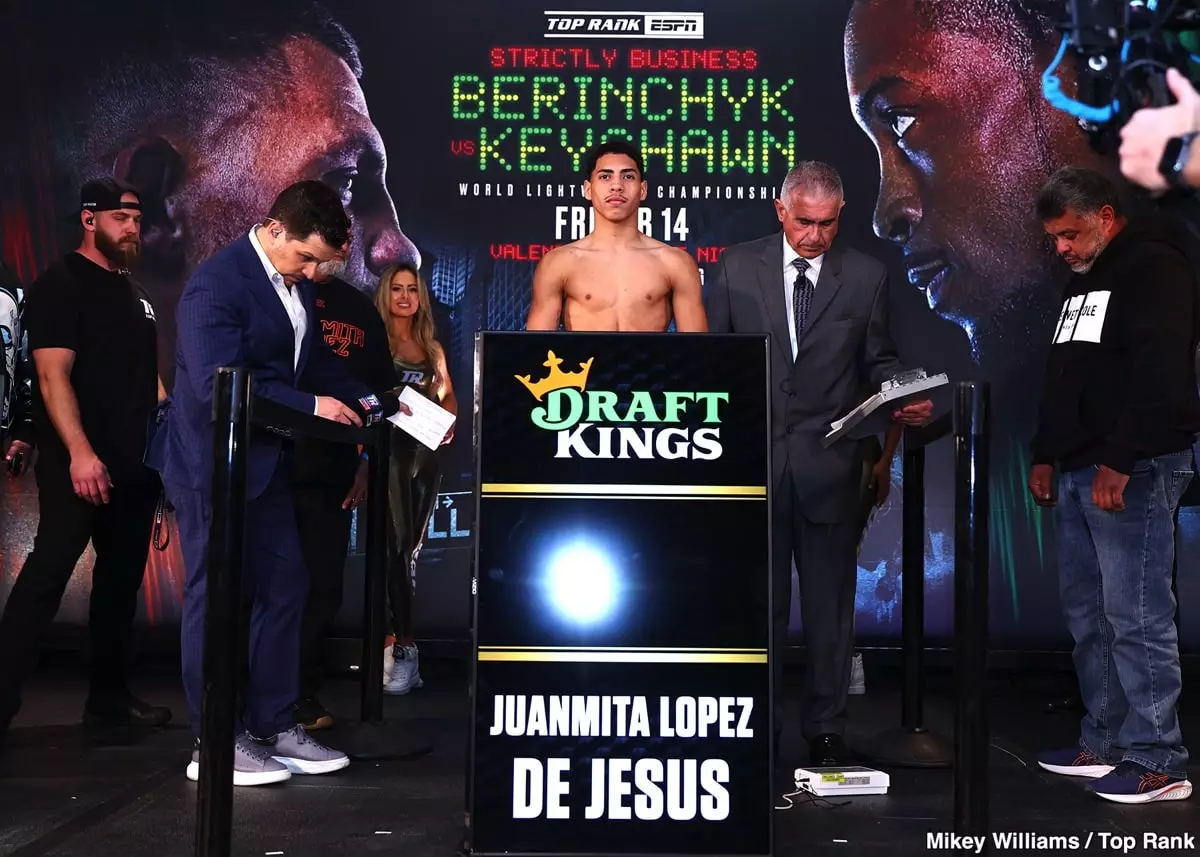The world today grapples with an exacerbated atmosphere of ignorance and outright racism, a stain that seems to permeate various sectors, including sports. As a microcosm of society, boxing is not immune to these issues. The upcoming bout between Denys Berinchyk and Keyshawn Davis, taking place this Valentine’s Day at the MSG Theater, serves as a poignant example. The fight, accessible via live streaming on ESPN, has been overshadowed by a wave of racist vitriol that Davis recently encountered. The reception of such actions within the boxing community raises important questions regarding the normalization of hate under the guise of sport.
Davis’s experience with receiving a package laden with racist sentiments is a somber reminder that to many, these egregious actions are trivialized as mere trolling or jest. It’s crucial to differentiate between playful banter and harmful racism, especially in a sport that often finds itself at odds with societal values. Some commentators may attempt to draw parallels between Davis’s situation and past remarks made by notable fighters like Bernard Hopkins, who infamously stated he would never lose to a “white boy.” However, such comparisons can diminish the severity of what Davis faced and objectify it into a simplistic narrative that ignores the complexities of racial hatred.
This instance serves as an alarming reminder that the fight against racism cannot simply be relegated to background chatter. The boxing community must confront this behavior, condemn it outright, and ensure such sentiments are not brushed aside as fight promotions. The tragic reality is that overt racism continues to find a place in our society, and it is incumbent upon all of us, especially public figures and athletes, to stand firm against it.
From a purely athletic standpoint, the matchup between Berinchyk and Davis promises to be a strategic battle in the ring. Historically, Davis has shown a tendency to begin fights on a slower note, often adopting a measured approach as he assesses his opponent. In contrast, Berinchyk is likely to launch an early offensive, employing feints and jabs to establish his rhythm. His ability to move laterally and adjust stances will contribute to a unique fight dynamic, forcing Davis to remain agile both physically and mentally.
An interesting aspect of their fighting styles lies in the contrasting strategies each fighter may employ. Berinchyk’s dexterity in utilizing angles could initially give him a tactical edge, but Davis’s experience in counterpunching may neutralize any advantage if he successfully navigates Berinchyk’s early flurries. Moreover, Davis’s adeptness in slipping punches and moving his upper body could enable him to evade Berinchyk’s advances while setting up calculated counterattacks.
Predicting the Outcome: Factors at Play
While the possibility of a knockout exists, particularly if Berinchyk becomes too complacent, it is essential for Davis to maintain his composure. Emotional distractions stemming from racism and external pressures can derail a fighter’s focus. For Davis, managing his emotional state during the week leading up to the fight is critical. If he channels these frustrations constructively, it could lead him to capitalize on Berinchyk’s technical lapses, such as being off-balance or overreaching during exchanges.
Conversely, Berinchyk’s defensive strategy—especially the high guard position—can be exploited if he becomes too predictable in his movements. Notably, Davis’s agility and speed might allow him to find openings and damage Berinchyk effectively, particularly in the body, which can open up opportunities for headshots later in the bout.
While the factors that could influence the fight are rife, I foresee a well-fought contest. My prediction for the match leans toward Keyshawn Davis winning by unanimous decision, provided he remains focused and strategic. As the boxing world awaits this much-anticipated duel, it becomes imperative to address the underlying issues of racism that threaten to overshadow the sport we love.


Napsat komentář